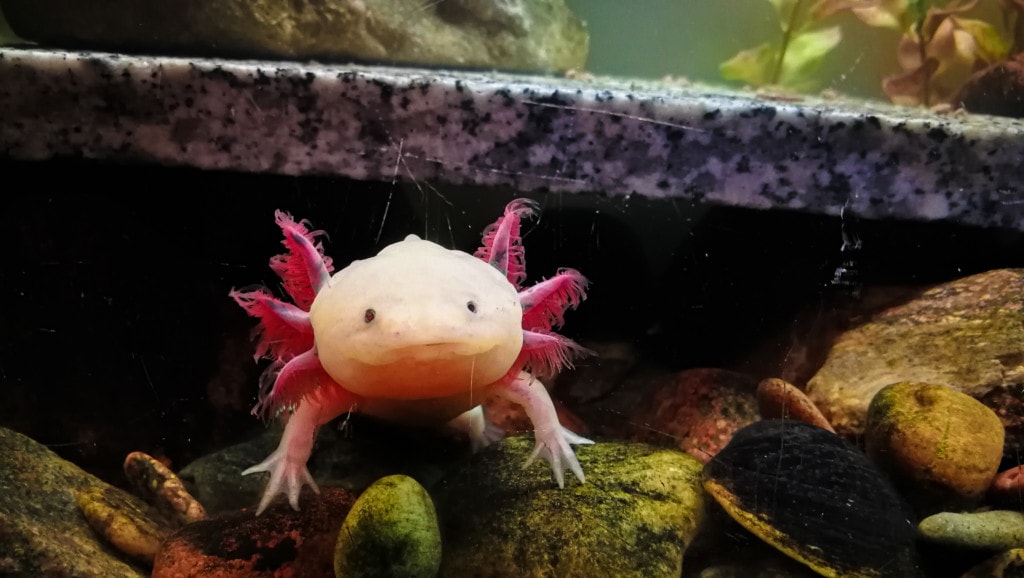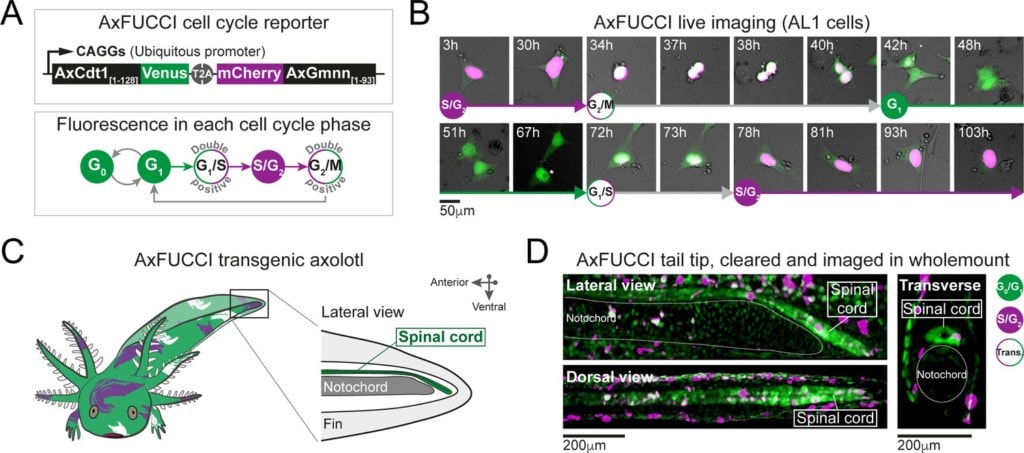How Axolotls Repair a Spinal Cord

Credit: Shutterstock
You probably know that we humans are bad at repairing our own spinal cords. However, the little salamanders known as axolotls can regenerate theirs. Now scientists have figured out how that works in more detail. Let’s dive in.
Axolotl 101
These little guys can regrow whole limbs. Understanding how that works has always been a priority for scientists because if we understand that process, we may be able to do the same in humans. We’ve known for some time that this involved stem cells, but we could only study what happened after the first 4 days of limb regrowth, what happened before that was a mystery.
Regrowing Spinal Cords
We also know that axolotls, when they lose their tall, can regrow not only the tail but also the spinal cord in the tail. This has also been of interest as scientists have been studying the use of stem cells to treat spinal cord injury for the last two decades. In fact, while we can’t yet accomplish anything close to what axolotls can, as I blogged a few weeks ago, the clinical research that we can use stem cell treatments to help patients who have spinal cord injuries is getting more robust every day.
How Does this Work?

Credit: eLife Journal
While scientists have known what happened after the first 4 days when an axolotl lost a tail and began to regrow its spinal cord, they haven’t known what happens in that first few days. To better understand this they created a computer model of what they thought was happening and then validated that by developing a tool to track individual stem cells in actual animals regrowing their spinal cords (see above). What they found was that a mystery messenger molecule (that they have yet to identify), synchronizes all of the neural stem cells into the same state of cell division. This is quite different as normally these cells divide randomly. These synchronized neural stem cells then divide rapidly in concert as the spinal cord regrows. The researchers have high hopes that using a similar molecule in a human spinal cord could help develop better treatments for spinal cord repair.
The upshot? We are closing in discovering all of the tricks of the trade that axolotls use to regrow limbs and other body parts. Once we know all of them, there could come a day that a drug is developed that we could sprinkle on an amputated limb or spinal cord and that regrows a new one!
_____________________________________________
References:
- Emanuel Cura Costa, Leo Otsuki, Aida Rodrigo Albors, Elly M Tanaka, Osvaldo Chara. Spatiotemporal control of cell cycle acceleration during axolotl spinal cord regeneration. eLife, 2021; 10 DOI: 10.7554/eLife.55665

NOTE: This blog post provides general information to help the reader better understand regenerative medicine, musculoskeletal health, and related subjects. All content provided in this blog, website, or any linked materials, including text, graphics, images, patient profiles, outcomes, and information, are not intended and should not be considered or used as a substitute for medical advice, diagnosis, or treatment. Please always consult with a professional and certified healthcare provider to discuss if a treatment is right for you.
